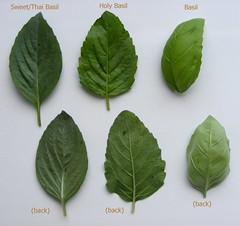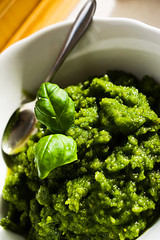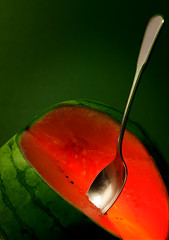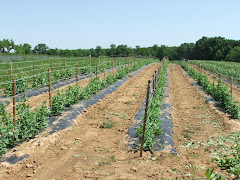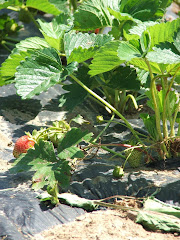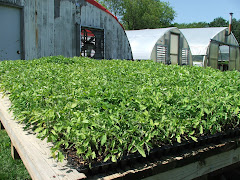
Eggplant is one of the heartiest vegetables out there, and makes Meatless Monday that much easier every week since it's so easy to make into a filling, satisfying main course. The first thing most people think of when they have eggplant on the brain is, of course, Eggplant Parmesan. I'm sure that many of you already have your favorite Eggplant Parm recipe, so I won't add my own today. Instead, I have a few recipes that try to veer away from frying and sauteing. Eggplants soak up much more fat than other vegetables when cooking in the aforementioned ways, so if you're trying to eat on the healthier side you should stick to baking, broiling, or grilling it. Believe me, I love fried food as much as the next person, and these other options are equally delicious and easy to make - you won't be disappointed.
Roasted Eggplant with Basil and Lemon
1 large eggplant
3-4 tablespoons extra virgin olive oil

3 cloves garlic, minced
2 tablespoons dried basil, thyme, and/or Italian seasoning
salt and pepper, to taste
2 tablespoons lemon juice
Directions: Cut the eggplant lengthwise into slices about 1/2 inch thick. Place slices on a paper towel and salt each one. Let sit for 30 minutes to drain excess moisture, then pat with paper towels. Preheat the oven to 400 degrees F. Lightly grease a baking sheet or shallow roasting pan. Add the garlic, herbs, salt, and pepper to the oil and mix thoroughly. Then, brush each eggplant with the oil and herb mixture. Roast in the oven for 25 to 30 minutes, until soft and golden brown. Remove from the oven, sprinkle with lemon juice, and serve.
Honey Glazed Roasted Vegetables
courtesy of eggplantrecipes.net
1/4 cup honey
1/4 cup extra virgin olive oil
3 tablespoons balsamic vinegar
1 clove garlic, crushed
salt, pepper, dried thyme, to taste
4-6 cups mixed halved red potatoes, sliced zucchini, thickly sliced onions, red peppers, carrots, sweet potatoes, sliced eggplant (any vegetables you have on hand, really)
Directions: Preheat oven to 400 degrees F. Combine honey, olive oil, balsamic vinegar, garlic, thyme, salt, and pepper in a small bowl and mix well. Arrange the cut vegetables in a roasting pan and brush the honey mixture over the vegetables, incorporating well. Bake for 30 minutes, stirring occasionally.
Eggplant "Steaks"
courtesy of Alton Brown, FoodNetwork.com
1/4 cup teriyaki sauce
1/4 cup thick steak sauce

1/2 cup extra virgin olive oil
2 tablespoons honey
2 tablespoons apple cider vinegar
salt and pepper, to taste
8 (1/2 inch) eggplant slices, purged with salt (see first recipe for directions)
1 cup Parmesan cheese, grated
3 tablespoons fresh parsley, optional
Directions: In a small bowl whisk together the teriyaki sauce, steak sauce, olive oil, honey, and apple cider vinegar. Season with salt and pepper. Pat your eggplant dry with paper towels. With a pastry brush apply the sauce to both sides of the eggplant. Place eggplant rounds onto a sheet tray fitted with a rack. Place the tray under the broiler for until eggplant is nicely browned, approximately 2 minutes. Turn slices over and place back under broiler to brown the other side. Generously sprinkle freshly grated Parmesan over all of the slices. Place back under the broiler for 1 minute to nicely brown the cheese. Serve plain or sprinkle with freshly chopped herbs. (Not everyone has a tray with a fitted rack and/or a broiler option in their oven, so feel free to grill the eggplant slices instead of the above option. )
